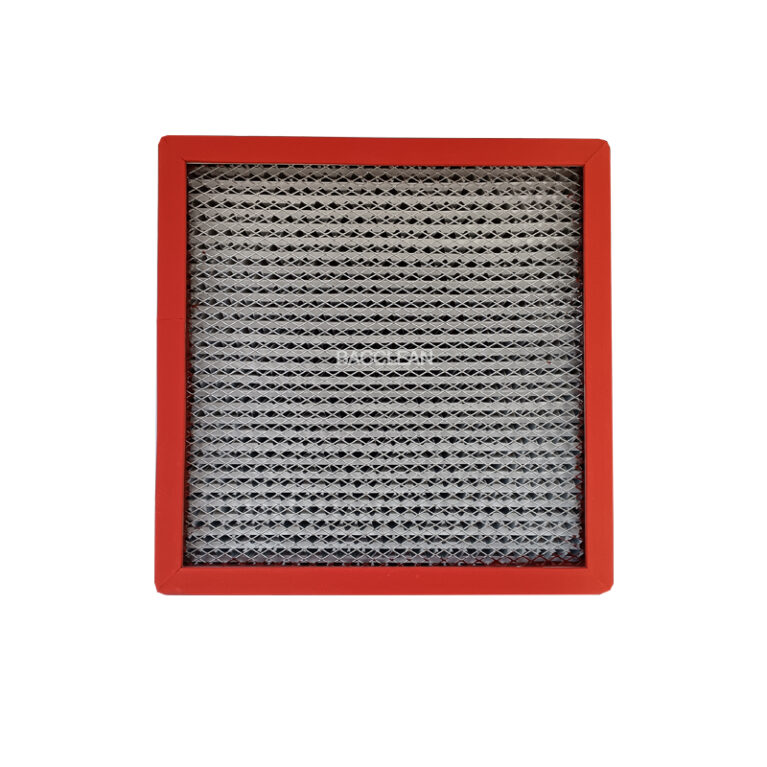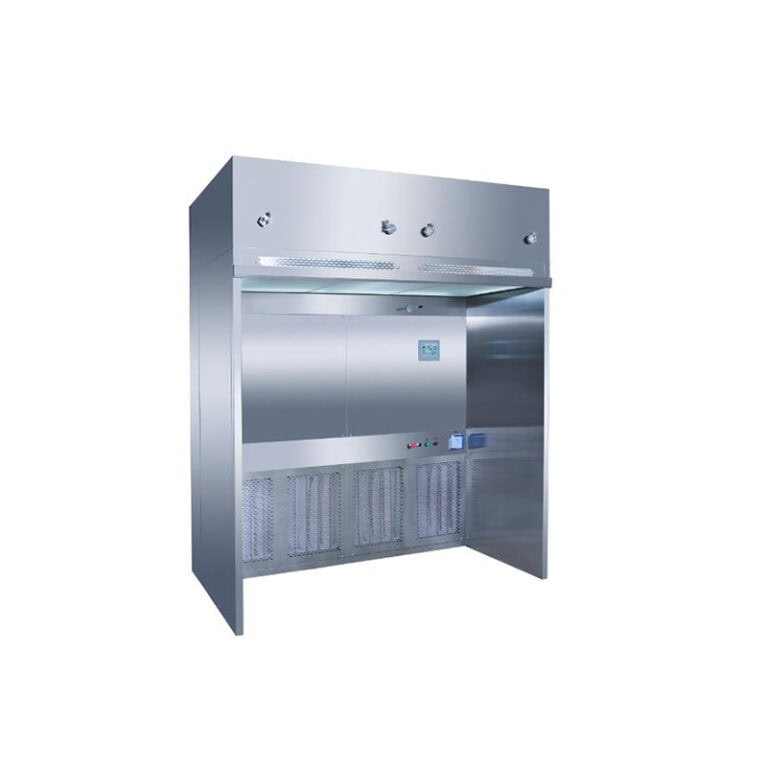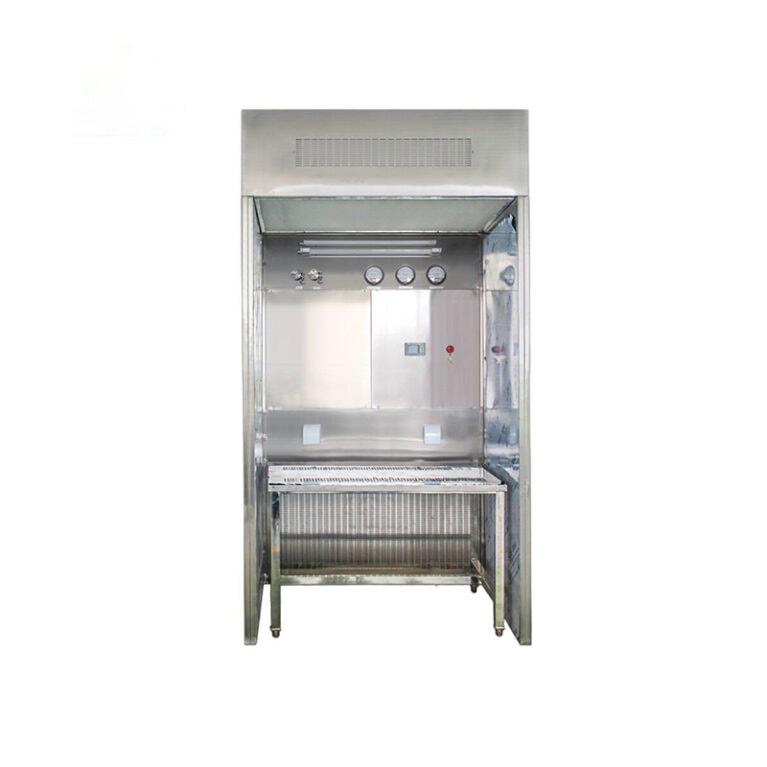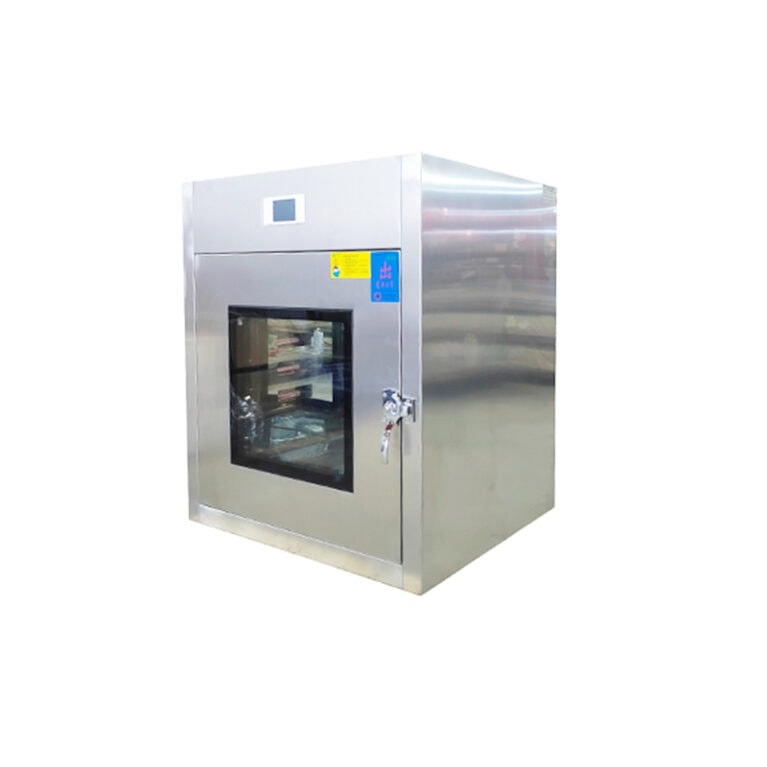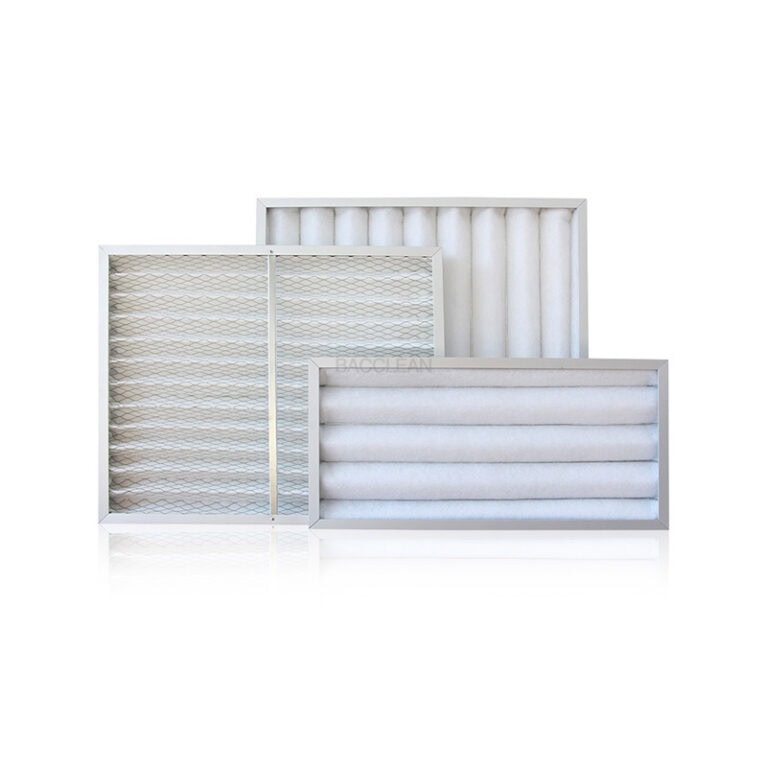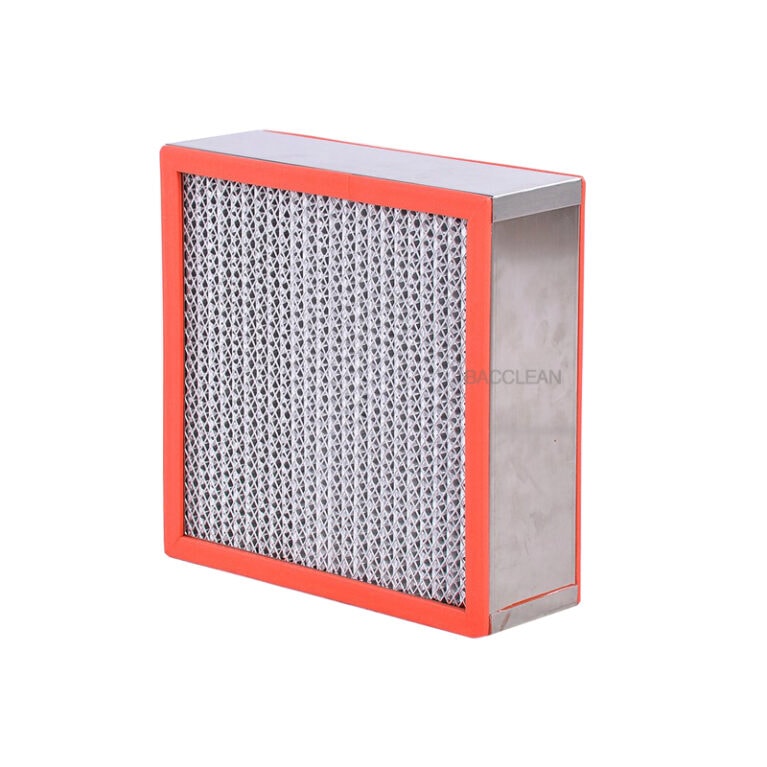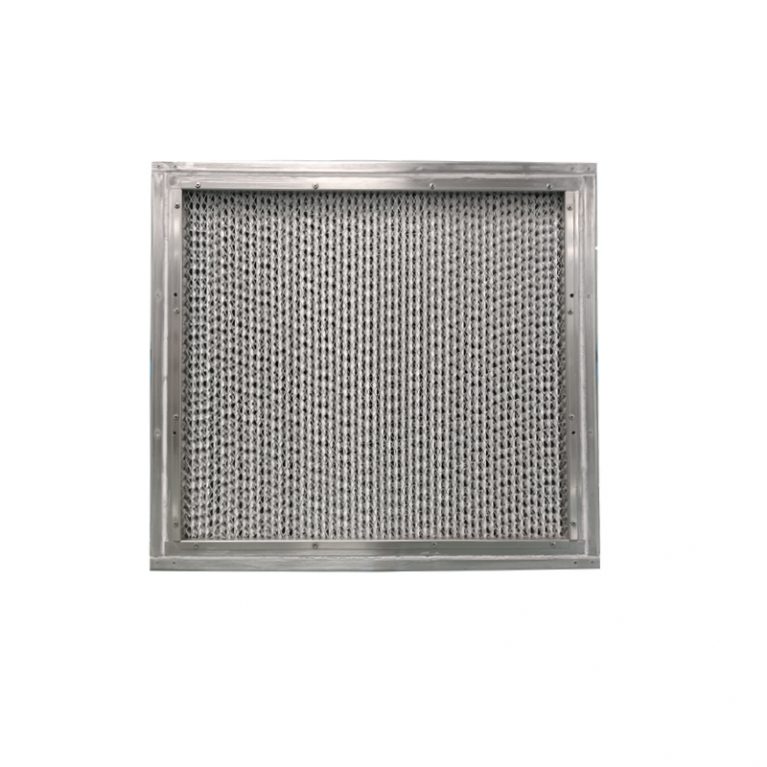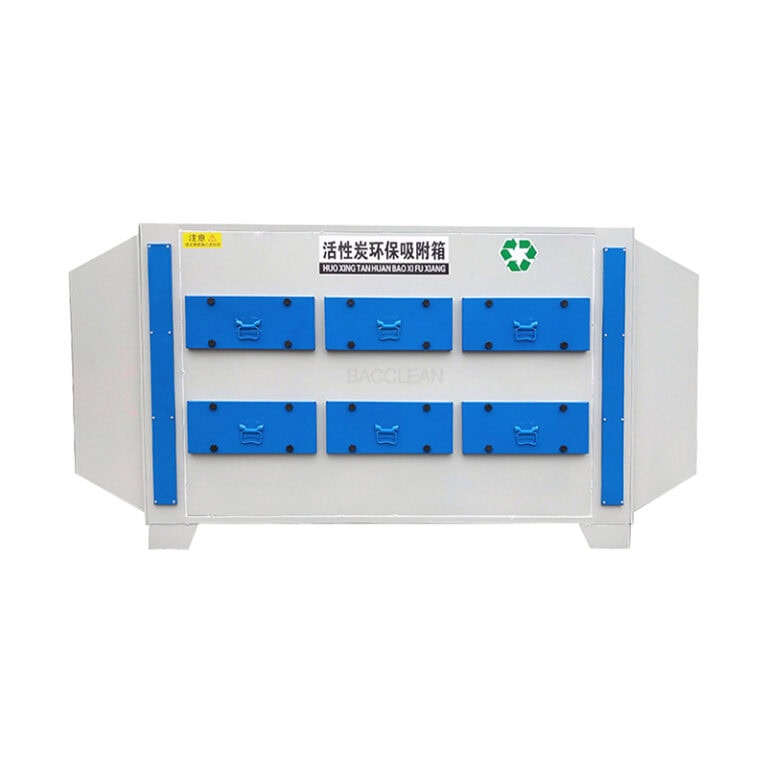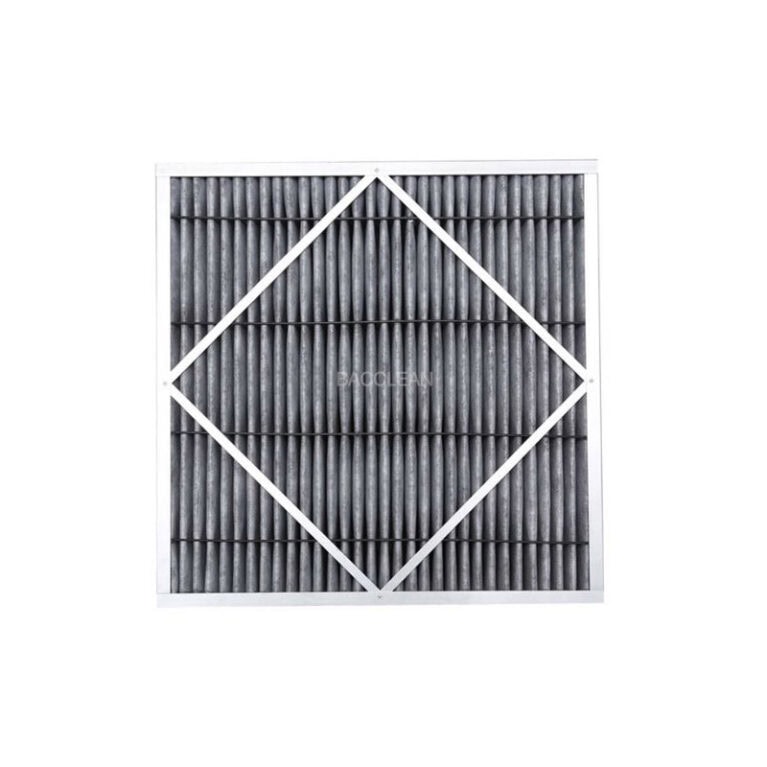La fenêtre de transfert de la douche à air est un dispositif de purification qui combine les fonctions de dépoussiérage de la douche à air et de transfert des articles. Sa fonction principale est d'éliminer les particules de poussière adhérant à la surface des articles grâce à un flux d'air propre à grande vitesse lors du transfert d'articles entre la zone propre et la zone non propre (ou des zones de différents niveaux de propreté), d'empêcher la contamination croisée et, en même temps, d'éviter la perturbation de l'équilibre de la pression de l'air dans la zone propre au cours du processus de transfert. Ses domaines d'application sont très concentrés dans les industries ayant des exigences strictes en matière de propreté, de stérilité et de contrôle des poussières, et peuvent être spécifiquement classés dans les catégories suivantes :
I. Industrie des produits biomédicaux et des dispositifs médicaux
Le contrôle des micro-organismes, de la poussière et des corps étrangers dans cette industrie est directement lié à la sécurité des produits (tels que la pureté des médicaments et la stérilité des instruments), et c'est l'un des principaux scénarios d'application du transfert par douche à air.
Dans le domaine de la production pharmaceutique : Il est utilisé pour le transfert de matériaux dans les ateliers de fabrication de médicaments à base de matières premières, les ateliers de préparation (tels que les injections, les formes de dosage solides orales) et les ateliers biopharmaceutiques (tels que la production de vaccins et d'anticorps). Par exemple, avant de transférer des matériaux auxiliaires et des matériaux d'emballage achetés à l'extérieur de zones non propres vers des zones propres de classe 10 000 ou 100 000, les poussières de surface sont éliminées par des douches d'air. Il est également possible de transférer des matériaux entre des salles de production de différentes classes de propreté (telles que les salles de pesage et les salles de préparation) afin d'éviter l'introduction de contaminants provenant de zones peu propres.
Dans le domaine de la production de dispositifs médicaux : Dans le cadre du processus de production de dispositifs médicaux stériles (seringues, instruments chirurgicaux et dispositifs médicaux implantables), les fenêtres de transfert sont utilisées pour le transfert interrégional de moules, de produits semi-finis et d'articles d'emballage, afin de garantir que les produits circulent dans un environnement stérile et de répondre aux exigences des "bonnes pratiques de fabrication des dispositifs médicaux" (BPF).
Dans les domaines des laboratoires et de la recherche scientifique : laboratoires de biosécurité (BSL-2/3), laboratoires d'essais microbiologiques et salles de culture cellulaire, il est utilisé pour transférer les échantillons expérimentaux, les milieux de culture, les réactifs, le matériel expérimental, etc., afin d'empêcher les bactéries externes diverses de contaminer le système expérimental et, en même temps, d'éviter la fuite de micro-organismes nocifs générés au cours de l'expérience.
Ii. Industrie alimentaire et des produits de santé
Le processus de production des produits alimentaires et de santé doit strictement contrôler la contamination microbienne (bactéries, moisissures, etc.) et la contamination par la poussière afin d'éviter la détérioration des produits, le développement de moisissures ou la non-conformité aux normes de sécurité alimentaire. L'application de la douche à air de transfert Windows permet de réduire directement le risque de contamination.
Production alimentaire aseptique : ateliers de produits laitiers (yaourt, lait aseptique), de produits carnés (aliments cuits sous vide), de conserves et de préparations pour nourrissons, utilisés pour le transfert de matières premières (lait en poudre, matières premières carnées), de matériaux d'emballage intérieur (sacs d'emballage aseptique) et d'outils de production (pales d'agitation, accessoires de la tête de remplissage), afin d'empêcher la poussière et les micro-organismes externes de pénétrer dans la zone de production propre.
Production de produits de santé et d'aliments fonctionnels : Les fenêtres de transfert sont utilisées pour transférer les souches probiotiques, les vitamines et d'autres matières premières sensibles afin d'éviter que les matières premières n'entrent en contact avec diverses bactéries ou poussières pendant le transfert, ce qui pourrait affecter l'activité et la pureté des produits.
Production de pâtisseries et de confiseries propres : Dans la boulangerie haut de gamme (comme les gâteaux stériles), la production de chocolat et de confiserie, il est utilisé pour transférer les matières premières sujettes à la poussière, comme la farine et la poudre de cacao, ou pour transférer les produits semi-finis avant l'emballage, réduisant ainsi la contamination par la poussière de la zone propre tout en garantissant que l'apparence et le goût des produits ne sont pas altérés par des objets étrangers.
Iii. Industrie de l'électronique et des semi-conducteurs
Les composants électroniques (en particulier les puces à semi-conducteurs et l'électronique de précision) sont extrêmement sensibles aux minuscules particules de poussière (telles que celles inférieures à 0,1μm). Un seul grain de poussière peut provoquer un court-circuit dans la puce ou une défaillance des composants. La fenêtre de transfert de la douche à air est un dispositif clé pour assurer la propreté de la production.
Production de semi-conducteurs et de circuits intégrés : Dans les ateliers de fabrication de plaquettes (avec des exigences de propreté atteignant la classe 100 / classe 10) et les ateliers d'emballage et de test de puces, elle est utilisée pour transférer les plaquettes, les photorésines, les masques, les matériaux d'emballage (tels que les cadres de plomb), etc. La douche d'air à grande vitesse peut éliminer les minuscules poussières qui adhèrent à la surface des matériaux, ce qui évite qu'elles ne provoquent le rebut du produit dans les processus de précision tels que la photolithographie et la gravure.
Fabrication électronique de précision : dans les ateliers de production d'écrans à cristaux liquides (LCD/OLED), de modules d'appareils photo de smartphones et de capteurs, les fenêtres de transfert sont utilisées pour transférer des substrats en verre, des lentilles, des modules de puces, etc., afin d'empêcher la poussière d'adhérer et d'affecter l'effet de l'écran ou la sensibilité du capteur.
Assemblage de composants électroniques : Dans l'atelier d'assemblage de composants électroniques haut de gamme (tels que les composants électroniques aérospatiaux et les puces automobiles), lorsque les matériaux sont transférés, la poussière adsorbée par l'électricité statique sur la surface est éliminée par des douches d'air afin de garantir la fiabilité des composants.
Iv. Optoélectronique et industrie des nouvelles énergies
Les exigences de propreté pour les produits optoélectroniques (tels que les modules photovoltaïques et les lentilles optiques) et les matériaux pour les nouvelles énergies (tels que les matériaux d'électrodes positives et négatives pour les batteries au lithium) sont similaires à celles de l'industrie électronique, et la pollution doit être contrôlée par des fenêtres de transfert de la douche à air.
Industrie photovoltaïque : Atelier de production de cellules photovoltaïques (silicium monocristallin/silicium polycristallin), utilisé pour le transfert des plaquettes de silicium, de la pâte d'argent, des outils de coupe, etc. Si la poussière adhère à la surface de la plaquette de silicium, elle entraîne une diminution du rendement de conversion de la cellule solaire. Si les matières premières à base de métaux précieux, telles que la pâte d'argent, sont contaminées, les coûts de production augmentent. La douche d'air peut résoudre efficacement ce problème.
Industrie optique : Lentilles optiques (telles que les lentilles d'appareil photo, les lentilles de microscope), ateliers de production d'appareils laser. Les fenêtres de transfert sont utilisées pour transférer les ébauches de lentilles, les matériaux de revêtement et les composants optiques afin d'empêcher la poussière d'adhérer et d'affecter la transmission de la lumière des lentilles ou la qualité du faisceau des dispositifs laser.
Dans l'industrie des batteries au lithium : Dans les ateliers de production de matériaux d'électrodes positives et négatives, de séparateurs et de cellules de batteries au lithium-ion (en particulier les batteries de puissance), les fenêtres de transfert sont utilisées pour transférer les poudres d'électrodes positives et négatives susceptibles d'absorber l'humidité et de générer de la poussière (comme les matériaux ternaires et le graphite), empêchant ainsi la pollution par la poussière de provoquer des courts-circuits internes dans la batterie et évitant en même temps que des impuretés externes n'affectent la capacité et la sécurité de la batterie.
V. Autres exigences particulières en matière de propreté champs
En plus des industries courantes mentionnées ci-dessus, les fenêtres de transfert de la douche à air sont également utilisées dans des scénarios avec des exigences particulières en matière de propreté :
Industrie aérospatiale et militaire : Dans les ateliers de production et d'assemblage de composants de moteurs d'avions et de composants de précision d'engins spatiaux (tels que les capteurs de satellites), la poussière est contrôlée par des douches d'air pendant le transfert des matériaux afin de garantir la fiabilité des composants dans des environnements extrêmes.
Zones propres des hôpitaux : Les salles d'opération stériles, les unités de soins intensifs et les centres de préparation des médicaments intraveineux (PIVAS) des hôpitaux sont utilisés pour transférer les instruments chirurgicaux, les pansements stériles et les solutions médicamenteuses intraveineuses préparées, afin d'empêcher les micro-organismes externes de contaminer les zones propres et de réduire le risque d'infections nosocomiales.
Dans l'industrie nucléaire : Dans les ateliers de production/maintenance de composants de précision liés aux réacteurs nucléaires et aux équipements de détection radioactive, les fenêtres de transfert (généralement associées à une conception de protection contre les rayonnements) sont utilisées pour transférer des matériaux non radioactifs, en évitant la pollution par les poussières qui affecte la précision des équipements et en réduisant en même temps le risque d'exposition du personnel.
En conclusion, la valeur essentielle de la fenêtre de transfert de la douche à air réside dans le blocage de la contamination pendant le transfert d'un grade de propreté à l'autre. Par conséquent, toutes les industries qui ont des exigences obligatoires en matière de "stabilité de l'environnement propre" sont ses principaux scénarios d'application. En outre, comme les exigences en matière de qualité et de sécurité des produits dans diverses industries continuent de s'accroître, son champ d'application continue de s'étendre progressivement.
I. Industrie des produits biomédicaux et des dispositifs médicaux
Le contrôle des micro-organismes, de la poussière et des corps étrangers dans cette industrie est directement lié à la sécurité des produits (tels que la pureté des médicaments et la stérilité des instruments), et c'est l'un des principaux scénarios d'application du transfert par douche à air.
Dans le domaine de la production pharmaceutique : Il est utilisé pour le transfert de matériaux dans les ateliers de fabrication de médicaments à base de matières premières, les ateliers de préparation (tels que les injections, les formes de dosage solides orales) et les ateliers biopharmaceutiques (tels que la production de vaccins et d'anticorps). Par exemple, avant de transférer des matériaux auxiliaires et des matériaux d'emballage achetés à l'extérieur de zones non propres vers des zones propres de classe 10 000 ou 100 000, les poussières de surface sont éliminées par des douches d'air. Il est également possible de transférer des matériaux entre des salles de production de différentes classes de propreté (telles que les salles de pesage et les salles de préparation) afin d'éviter l'introduction de contaminants provenant de zones peu propres.
Dans le domaine de la production de dispositifs médicaux : Dans le cadre du processus de production de dispositifs médicaux stériles (seringues, instruments chirurgicaux et dispositifs médicaux implantables), les fenêtres de transfert sont utilisées pour le transfert interrégional de moules, de produits semi-finis et d'articles d'emballage, afin de garantir que les produits circulent dans un environnement stérile et de répondre aux exigences des "bonnes pratiques de fabrication des dispositifs médicaux" (BPF).
Dans les domaines des laboratoires et de la recherche scientifique : laboratoires de biosécurité (BSL-2/3), laboratoires d'essais microbiologiques et salles de culture cellulaire, il est utilisé pour transférer les échantillons expérimentaux, les milieux de culture, les réactifs, le matériel expérimental, etc., afin d'empêcher les bactéries externes diverses de contaminer le système expérimental et, en même temps, d'éviter la fuite de micro-organismes nocifs générés au cours de l'expérience.
Ii. Industrie alimentaire et des produits de santé
Le processus de production des produits alimentaires et de santé doit strictement contrôler la contamination microbienne (bactéries, moisissures, etc.) et la contamination par la poussière afin d'éviter la détérioration des produits, le développement de moisissures ou la non-conformité aux normes de sécurité alimentaire. L'application de la douche à air de transfert Windows permet de réduire directement le risque de contamination.
Production alimentaire aseptique : ateliers de produits laitiers (yaourt, lait aseptique), de produits carnés (aliments cuits sous vide), de conserves et de préparations pour nourrissons, utilisés pour le transfert de matières premières (lait en poudre, matières premières carnées), de matériaux d'emballage intérieur (sacs d'emballage aseptique) et d'outils de production (pales d'agitation, accessoires de la tête de remplissage), afin d'empêcher la poussière et les micro-organismes externes de pénétrer dans la zone de production propre.
Production de produits de santé et d'aliments fonctionnels : Les fenêtres de transfert sont utilisées pour transférer les souches probiotiques, les vitamines et d'autres matières premières sensibles afin d'éviter que les matières premières n'entrent en contact avec diverses bactéries ou poussières pendant le transfert, ce qui pourrait affecter l'activité et la pureté des produits.
Production de pâtisseries et de confiseries propres : Dans la boulangerie haut de gamme (comme les gâteaux stériles), la production de chocolat et de confiserie, il est utilisé pour transférer les matières premières sujettes à la poussière, comme la farine et la poudre de cacao, ou pour transférer les produits semi-finis avant l'emballage, réduisant ainsi la contamination par la poussière de la zone propre tout en garantissant que l'apparence et le goût des produits ne sont pas altérés par des objets étrangers.
Iii. Industrie de l'électronique et des semi-conducteurs
Les composants électroniques (en particulier les puces à semi-conducteurs et l'électronique de précision) sont extrêmement sensibles aux minuscules particules de poussière (telles que celles inférieures à 0,1μm). Un seul grain de poussière peut provoquer un court-circuit dans la puce ou une défaillance des composants. La fenêtre de transfert de la douche à air est un dispositif clé pour assurer la propreté de la production.
Production de semi-conducteurs et de circuits intégrés : Dans les ateliers de fabrication de plaquettes (avec des exigences de propreté atteignant la classe 100 / classe 10) et les ateliers d'emballage et de test de puces, elle est utilisée pour transférer les plaquettes, les photorésines, les masques, les matériaux d'emballage (tels que les cadres de plomb), etc. La douche d'air à grande vitesse peut éliminer les minuscules poussières qui adhèrent à la surface des matériaux, ce qui évite qu'elles ne provoquent le rebut du produit dans les processus de précision tels que la photolithographie et la gravure.
Fabrication électronique de précision : dans les ateliers de production d'écrans à cristaux liquides (LCD/OLED), de modules d'appareils photo de smartphones et de capteurs, les fenêtres de transfert sont utilisées pour transférer des substrats en verre, des lentilles, des modules de puces, etc., afin d'empêcher la poussière d'adhérer et d'affecter l'effet de l'écran ou la sensibilité du capteur.
Assemblage de composants électroniques : Dans l'atelier d'assemblage de composants électroniques haut de gamme (tels que les composants électroniques aérospatiaux et les puces automobiles), lorsque les matériaux sont transférés, la poussière adsorbée par l'électricité statique sur la surface est éliminée par des douches d'air afin de garantir la fiabilité des composants.
Iv. Optoélectronique et industrie des nouvelles énergies
Les exigences de propreté pour les produits optoélectroniques (tels que les modules photovoltaïques et les lentilles optiques) et les matériaux pour les nouvelles énergies (tels que les matériaux d'électrodes positives et négatives pour les batteries au lithium) sont similaires à celles de l'industrie électronique, et la pollution doit être contrôlée par des fenêtres de transfert de la douche à air.
Industrie photovoltaïque : Atelier de production de cellules photovoltaïques (silicium monocristallin/silicium polycristallin), utilisé pour le transfert des plaquettes de silicium, de la pâte d'argent, des outils de coupe, etc. Si la poussière adhère à la surface de la plaquette de silicium, elle entraîne une diminution du rendement de conversion de la cellule solaire. Si les matières premières à base de métaux précieux, telles que la pâte d'argent, sont contaminées, les coûts de production augmentent. La douche d'air peut résoudre efficacement ce problème.
Industrie optique : Lentilles optiques (telles que les lentilles d'appareil photo, les lentilles de microscope), ateliers de production d'appareils laser. Les fenêtres de transfert sont utilisées pour transférer les ébauches de lentilles, les matériaux de revêtement et les composants optiques afin d'empêcher la poussière d'adhérer et d'affecter la transmission de la lumière des lentilles ou la qualité du faisceau des dispositifs laser.
Dans l'industrie des batteries au lithium : Dans les ateliers de production de matériaux d'électrodes positives et négatives, de séparateurs et de cellules de batteries au lithium-ion (en particulier les batteries de puissance), les fenêtres de transfert sont utilisées pour transférer les poudres d'électrodes positives et négatives susceptibles d'absorber l'humidité et de générer de la poussière (comme les matériaux ternaires et le graphite), empêchant ainsi la pollution par la poussière de provoquer des courts-circuits internes dans la batterie et évitant en même temps que des impuretés externes n'affectent la capacité et la sécurité de la batterie.
V. Autres exigences particulières en matière de propreté champs
En plus des industries courantes mentionnées ci-dessus, les fenêtres de transfert de la douche à air sont également utilisées dans des scénarios avec des exigences particulières en matière de propreté :
Industrie aérospatiale et militaire : Dans les ateliers de production et d'assemblage de composants de moteurs d'avions et de composants de précision d'engins spatiaux (tels que les capteurs de satellites), la poussière est contrôlée par des douches d'air pendant le transfert des matériaux afin de garantir la fiabilité des composants dans des environnements extrêmes.
Zones propres des hôpitaux : Les salles d'opération stériles, les unités de soins intensifs et les centres de préparation des médicaments intraveineux (PIVAS) des hôpitaux sont utilisés pour transférer les instruments chirurgicaux, les pansements stériles et les solutions médicamenteuses intraveineuses préparées, afin d'empêcher les micro-organismes externes de contaminer les zones propres et de réduire le risque d'infections nosocomiales.
Dans l'industrie nucléaire : Dans les ateliers de production/maintenance de composants de précision liés aux réacteurs nucléaires et aux équipements de détection radioactive, les fenêtres de transfert (généralement associées à une conception de protection contre les rayonnements) sont utilisées pour transférer des matériaux non radioactifs, en évitant la pollution par les poussières qui affecte la précision des équipements et en réduisant en même temps le risque d'exposition du personnel.
En conclusion, la valeur essentielle de la fenêtre de transfert de la douche à air réside dans le blocage de la contamination pendant le transfert d'un grade de propreté à l'autre. Par conséquent, toutes les industries qui ont des exigences obligatoires en matière de "stabilité de l'environnement propre" sont ses principaux scénarios d'application. En outre, comme les exigences en matière de qualité et de sécurité des produits dans diverses industries continuent de s'accroître, son champ d'application continue de s'étendre progressivement.

